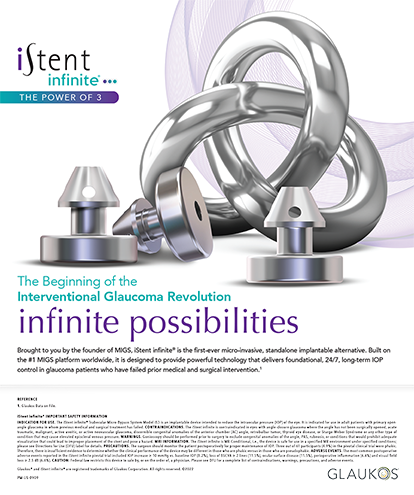
Patients seeking refractive cataract surgery do so with the goals of spectacle independence, seeing as well as or better than they do with their current glasses or contact lenses, and an improvement in visual quality. To meet these objectives, we surgeons must select the appropriate IOL according to the patient’s ocular health and lifestyle, minimize postoperative astigmatism, and achieve the postoperative target. Some of these patients sought out corneal refractive surgery earlier in life to treat spherical and astigmatic refractive errors, and they expect the same visual quality and spectacle freedom they achieved with laser vision correction. Minimizing (or eliminating) postoperative astigmatism is a cornerstone of corneal and lens-based refractive surgery, and subjective and objective outcomes are directly related to this fundamental principle.
AT A GLANCE
- Cataract surgery often inadequately treats small amounts of astigmatism, leading to patients’ dissatisfaction.
- The US availability of low-powered toric IOLs would advance refractive cataract surgery dramatically by allowing ophthalmologists to treat small amounts of clinically significant astigmatism with precision.
We have so many tools in our toolbox with which to achieve success, but one still eludes those of us practicing in the United States: low-powered toric IOLs.
A LITTLE MEANS A LOT
We would all agree that 0.25 D of astigmatism can be effectively treated with glasses or LASIK. It is also well established that refractive outcomes are tighter with LASIK than with cataract surgery. One possible explanation, beyond effective lens position, is that cataract surgery often inadequately treats small amounts of astigmatism.
Now more than ever, patients are seeking spectacle independence for distance and near tasks. To succeed with multifocal IOLs and monovision requires completely treating even small amounts of astigmatism with a goal of plano. According to Collins and colleagues, “Residual astigmatism caused a significantly greater reduction of binocular visual acuity in the monovision condition than it did in normal binocular conditions. This effect appears to be related to a process of meridional interocular suppression. It may therefore be of clinical importance to correct low amounts of residual astigmatism in monovision corrections to provide optimum binocular visual acuity.”1
Small amounts of residual or untreated astigmatism are a leading cause of patients’ dissatisfaction with multifocal IOLs and monovision.2,3 Based on the literature supporting treating small amounts of astigmatism and the goal of eliminating refractive error for optimized visual performance after multifocal IOL and blended vision surgery, the same approach should be taken with patients who are not candidates for multifocal IOLs or blended vision (monovision) and those who desire distance correction only based on preference, profession, or hobbies. Low-powered toric IOLs (including multifocal and extended-depth-of-focus) would allow us to improve outcomes in these settings by adequately treating even small amounts of astigmatism with more precision.
Challenges of Measurement
Koch and colleagues’ groundbreaking work on the effect of posterior corneal astigmatism on astigmatism correction calculations in the setting of toric IOLs has increased our awareness of the need to more aggressively treat against-the-rule astigmatism and oblique astigmatism. Insufficient treatment was a significant source of error in the surgical management of astigmatism in the past, because anterior corneal measurements underestimated total corneal astigmatism by 0.22 @ 180º and exceeded 0.50 D in 5% of eyes evaluated.1
1. Koch DD, Ali SF, Weikert MP, et al. Contribution of posterior corneal astigmatism to total corneal astigmatism. J Cataract Refract Surg. 2012;38(12):2080-2087.
A MATTER OF PRECISION
Although astigmatic keratotomy (AK) works beautifully and advances such as laser AK may offer precise incisional architecture, corneal biomechanics are poorly understood in relation to these procedures. In my experience, toric IOLs are more precise than AK. The availability of low-powered toric IOLs would advance refractive cataract surgery dramatically by allowing us to treat small amounts of clinically significant astigmatism with precision.
1. Collins M, Goode A, Brown B. Distance visual acuity and monovision. Optom Vis Sci. 1993;70(9):723-728.
2. de Vries NE, Webers CA, Touwslager WR, et al. Dissatisfaction after implantation of multifocal intraocular lenses. J Cataract Refract Surg. 2011;37(5):859-865.
3. Woodward MA, Randleman JB, Stulting RD. Dissatisfaction after multifocal intraocular lens implantation. J Cataract Refract Surg. 2009;35(6):992-997.




